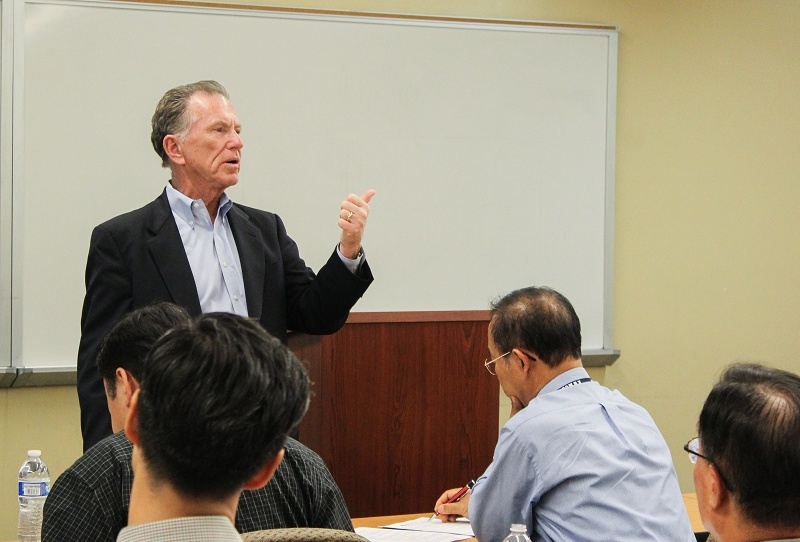
Many missionaries may feel convicted to go and share the gospel with an unreached people group in a different country, but may feel lost as to how to prepare for such a task and how to actually do ministry once there. How should the research on the region and people group be conducted? How does engagement work once a missionary arrives?
In an elective seminar part of the Korean World Mission Conference, which took place from June 6 to 10, Paul Eshleman, the founder of the JESUS Film Project and director of 'Finishing the Task' Movement, shared his thoughts on the first steps missionaries and churches could take to begin engaging an unreached people group.
First, Eshleman encouraged the group of about a dozen Korean missionaries at the seminar to first take what he called a 'survey trip' to the location they were interested in to confirm that this is the group that they would like to commit to. Taking the survey trip also allows them to meet potential partners in local churches, Eshleman said, and to confirm whether what they have been learning about the region from afar is actually true.
He also encouraged the missionaries to see if there are churches or ministries in their current local areas that are of the indigenous culture they are trying to reach. For example, if a missionary who currently resides in Los Angeles was interested in engaging with the Kahar people group of India, he or she could first check if there are any Indian churches or ministries in Southern California with members and leaders that speak Gujarati.
Such an approach allows the missionary to become more familiar with the indigenous culture, and check any personal biases or prejudices that they may have, Eshleman explained.
"Find a church that's close to you with that indigneous culture," Eshleman said, "and build a relationship with them so that you can partner with them in reaching that unreached people group."
"Ask this new partner to strategize with you on how to reach that people group -- if you try to do it on your own, you'll use your own biased way to approach them," he added.
He also suggested them to research and see if there are any indigenous coalitions of churches or mission organizations that are already working to reach that people group. If there is, these organizations would already be a few steps ahead and could offer valuable support and guidance in terms of how to reach that people group.
Once that new indigenous and local partner is found, Eshleman recommended signing a Memorandum of Understanding (MOU) with that partner, which would detail the roles of both the indigenous partner, and the missionary-sending church or organization. Some details that could be written in the MOU include the requirements for recruiting new workers in the mission field, the salary of the workers, and what each party will provide, for example.
Finally, Eshleman shared some thoughts on what the missionaries could do once they arrive at the mission field.
"Imagine that you have finally arrived after all of your preparation," Eshelman posed. "What do you do first? I think I would pray. Just walk around the village and pray over the land."
Then, the missionaries should gauge how the gospel should be shared to the people. Is there a Bible translated in their language? If not, resources such as StoryRunners and the OneStory Partnership could help develop a written translation, provide audio recordings, or train missionaries to orally tell Bible stories in the indigenous language.
From there, missionaries could begin personal evangelism by visiting homes and communicating the gospel. Those who receive the gospel could then be discipled and taught how to study the Bible, and as the movement grows, small groups and house churches can be formed.
"If you would like to use the JESUS Film to do some wide-spread sowing but there is none available in the indigenous language, let us know," Eshleman said. The cost to translate the JESUS Film in a new language is about $38,000, but several businesses subsidize about $19,000 of the cost.
Meanwhile, the seminar was quite interactive, as Eshleman provided the missionaries with the most recent list of unengaged, unreached people groups found by the Finishing the Task Movement, and missionaries were able to share questions and ideas regarding reaching the people groups they were interested in.



















